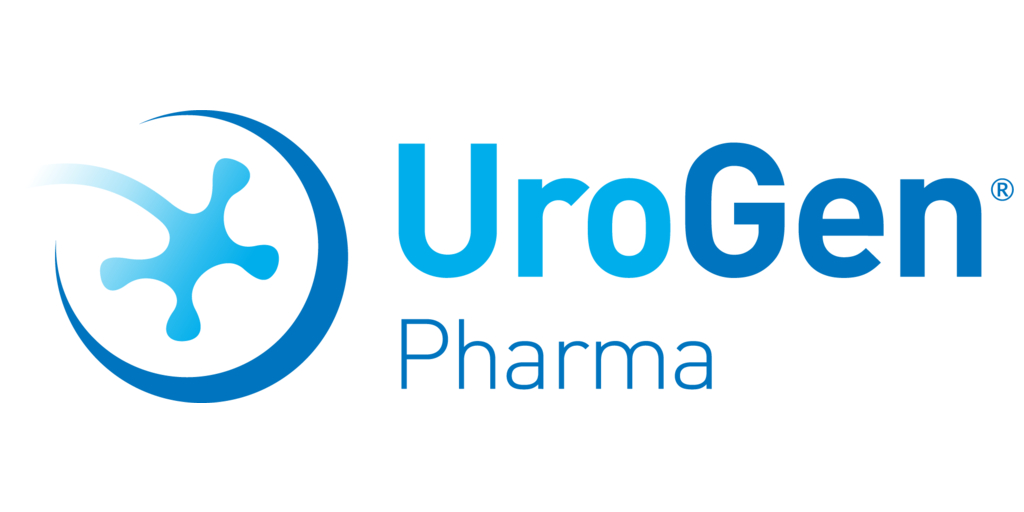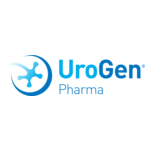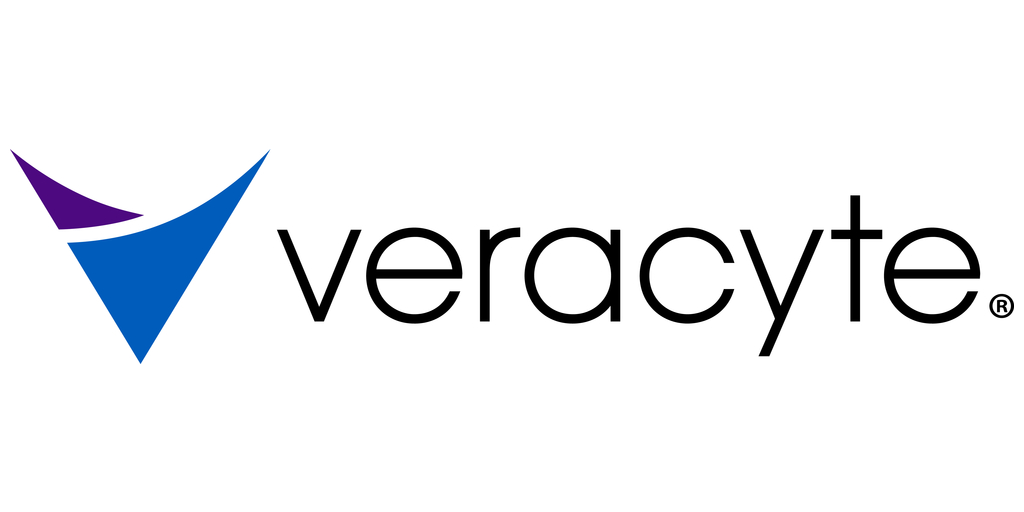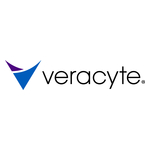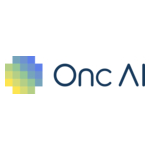KEYTRUDA® (pembrolizumab) as Perioperative Treatment With Standard of Care (SOC) Adjuvant Therapy Significantly Improved Event-Free Survival Compared to SOC Alone in Patients With Resectable Locally Advanced Head and Neck Squamous Cell Carcinoma
KEYTRUDA® (pembrolizumab) as Perioperative Treatment With Standard of Care (SOC) Adjuvant Therapy Significantly Improved Event-Free Survival Compared to SOC Alone in Patients With Resectable Locally Advanced Head and Neck Squamous Cell Carcinoma

KEYNOTE-689 marks the first positive trial in more than two decades for patients with resected locally advanced head and neck squamous cell carcinoma (LA-HNSCC)
Results to be presented at American Association for Cancer Research (AACR) Annual Meeting 2025 during a Plenary Session and included in official meeting press program
RAHWAY, N.J.–(BUSINESS WIRE)–$MRK #MRK–Merck (NYSE: MRK), known as MSD outside of the United States and Canada, today announced results from the Phase 3 KEYNOTE-689 trial evaluating KEYTRUDA® (pembrolizumab), Merck’s anti-PD-1 therapy, as a perioperative treatment regimen for patients with stage III or IVA, resected, locally advanced head and neck squamous cell carcinoma (LA-HNSCC). Results at the first interim analysis of the trial showed KEYTRUDA significantly improved event-free survival (EFS) as part of a perioperative treatment regimen with adjuvant standard of care (SOC) radiotherapy with or without cisplatin compared to adjuvant standard of care (SOC) radiotherapy with or without cisplatin alone in patients with resectable LA-HNSCC. These data are being presented for the first time today during a Plenary Session at the American Association for Cancer Research (AACR) Annual Meeting 2025 (Abstract #CT001) and were selected for the AACR press program.
After a median follow-up of 38.3 months (range, 9.0-66.5), treatment with KEYTRUDA before surgery (neoadjuvant), then continued in combination with standard of care radiotherapy (with or without cisplatin) after surgery followed by KEYTRUDA alone (adjuvant), reduced the risk of EFS events by 34% (HR=0.66 [95% CI, 0.49-0.88]; p=.0022) in the combined positive score (CPS) ≥10 population, by 30% (HR=0.70 [95% CI, 0.55-0.89; p=.0014) in the CPS ≥1 population and by 27% (HR=0.73 [95% CI 0.58-0.92]; p=.0041) in the intent-to-treat (ITT) population, compared to adjuvant radiotherapy (with or without cisplatin) alone in the ITT population. Among the CPS ≥10 population, median EFS was 59.7 months in the KEYTRUDA plus SOC group (95% CI, 41.1-not reached) versus 26.9 months (95% CI, 18.3-51.5) in the SOC group. Among the CPS ≥1 population, median EFS was 59.7 months (95% CI, 37.9-not reached) in the KEYTRUDA plus SOC group versus 29.6 months (95% CI, 19.5-41.9) in the SOC group. In the ITT population, median EFS was 51.8 months (95% CI, 37.5-not reached) in the KEYTRUDA plus SOC group versus 30.4 months (95% CI, 21.8-50.1) in the SOC group. The safety profile of KEYTRUDA was consistent with that observed in previously reported studies; no new safety signals were identified.
“As the first positive trial in over two decades for patients with resectable, locally advanced head and neck squamous cell carcinoma, the presentation of these landmark results marks an important moment for these patients and those who care for them,” said Dr. Ravindra Uppaluri, the study’s co-principal investigator, director of Head and Neck Surgical Oncology, Brigham and Women’s Hospital and Dana-Farber Cancer Institute. “KEYNOTE-689 represents a meaningful development with a potential to provide an option that helps certain patients with LA-HNSCC reduce the risk of recurrence and disease progression earlier in their treatment journey.”
“The addition of immunotherapy using KEYTRUDA to standard of care surgery and adjuvant (chemo)radiotherapy resulted in a significant reduction in the risk of event-free survival events by 27%, compared with standard of care therapy alone,” said study co-principal investigator Dr. Douglas Adkins, Professor, Division of Oncology, Washington University School of Medicine in St. Louis. “These results are notable as they mark the first time an anti-PD-1 therapy has demonstrated a statistically significant and clinically meaningful improvement in event-free survival in the neoadjuvant and adjuvant setting in earlier stages of head and neck squamous cell carcinoma.”
The study also showed a statistically significant improvement in major pathological response (mPR) rate, a key secondary endpoint, in patients with CPS ≥10 (difference in mPR rates: 13.7% [95% CI, 9.7-18.7]; p<0.00001), CPS ≥1 (9.8% [95% CI, 7.0-13.3]; p<0.00001) and in the ITT population (9.3% [95% CI, 6.7–12.8, P<.00001), compared to adjuvant radiotherapy alone.
A trend toward improvement in overall survival (OS), another key secondary endpoint, was observed in patients with CPS ≥10 (HR=0.72 [95% CI, 0.52-0.98]) at the time of this interim analysis for the KEYTRUDA plus standard of care regimen versus standard of care alone. The OS results did not reach statistical significance at the time of this interim analysis. Due to the statistical testing hierarchy, formal testing was not performed in the CPS ≥1 and ITT populations. OS will be evaluated at the next interim analysis.
“As the 12th positive pivotal trial for a KEYTRUDA-based regimen in earlier-stage cancers, the results from KEYNOTE-689 are a testament to our commitment to address an unmet need in this important area of research,” said Dr. Marjorie Green, senior vice president and head of oncology, global clinical development, Merck Research Laboratories. “These compelling results illustrate the potential of this regimen to change the landscape of care for certain patients facing this challenging disease. We are working with the FDA and other global authorities to bring this new option to patients as quickly as possible.”
A supplemental Biologics License Application (sBLA) for KEYTRUDA based on data from KEYNOTE-689 is under priority review with the U.S. Food and Drug Administration (FDA), with a Prescription Drug User Fee Act (PDUFA), or target action, date of June 23, 2025.
KEYTRUDA is currently approved as monotherapy and in combination regimens for appropriate patients with metastatic or unresectable, recurrent HNSCC in the U.S., Europe, China, Japan and other countries around the world. For more information, please see the “Selected KEYTRUDA® (pembrolizumab) Indications in the U.S.” section below.
Study design and additional data from KEYNOTE-689
KEYNOTE-689 is a randomized, active-controlled, open-label Phase 3 trial (ClinicalTrials.gov, NCT03765918) evaluating KEYTRUDA as neoadjuvant treatment and KEYTRUDA in combination with standard of care radiotherapy (with or without cisplatin) as adjuvant treatment in treatment-naïve patients with newly diagnosed, stage III or IVA resectable, locally advanced head and neck squamous cell carcinoma (LA-HNSCC). Efficacy outcomes are classified by programmed cell death ligand 1 (PD-L1) combined positive score (CPS) status. The primary endpoint is EFS, which is defined as the time from randomization to the first occurrence of radiographic disease progression; local or distant progression or recurrence; or death due to any cause. The secondary endpoints include OS, mPR, pathological complete response and safety. The study enrolled 714 patients who were randomized 1:1 to receive:
- KEYTRUDA (200 mg intravenously [IV] every three weeks [Q3W] for two cycles) as neoadjuvant therapy prior to surgery, followed by either KEYTRUDA (200 mg IV Q3W for 15 cycles) plus standard of care radiotherapy with cisplatin (100 mg/m2 IV Q3W for three cycles) as adjuvant therapy following surgery for high-risk patients or KEYTRUDA (200 mg IV Q3W for 15 cycles) plus standard of care radiotherapy without cisplatin as adjuvant therapy following surgery for low-risk patients; or
- No neoadjuvant therapy prior to surgery, followed by adjuvant standard of care radiotherapy with cisplatin (100 mg/m2 IV Q3W for three cycles) as adjuvant therapy following surgery for high-risk patients or standard of care radiotherapy without cisplatin as adjuvant therapy following surgery for low-risk patients.
The safety profile of KEYTRUDA was consistent with that observed in previously reported studies. Grade ≥3 treatment-related adverse events (TRAEs) occurred in 44.6% of patients receiving KEYTRUDA plus standard of care radiotherapy versus 42.9% of patients receiving standard of care radiotherapy alone. TRAEs led to death in 1.1% of patients receiving the KEYTRUDA regimen (n=4) and 0.3% of patients receiving standard of care radiotherapy (n=1). No new safety concerns were identified. Immune-mediated adverse events (AEs) of any grade occurred in 43.2% of patients receiving the KEYTRUDA regimen, most commonly hypothyroidism (24.7%).
About head and neck cancer
Head and neck cancer describes a number of different tumors that develop in or around the throat, larynx, nose, sinuses and mouth. Most head and neck cancers are squamous cell carcinomas that begin in the flat, squamous cells that make up the thin surface layer of the structures in the head and neck. Locally advanced head and neck squamous cell carcinoma (LA-HNSCC) is cancer that has grown outside the original location, but has not yet spread to distant parts of the body. There are several factors that greatly increase the risk of developing head and neck cancer, including tobacco and alcohol use and human papillomavirus (HPV). It is estimated there were more than 947,200 new cases of head and neck cancer diagnosed and over 482,400 deaths from the disease in 2022 globally. In the U.S., it is estimated there will be approximately 72,680 new cases of head and neck cancer diagnosed and more than 16,680 deaths from the disease in 2025.
About Merck’s early-stage cancer clinical program
Finding cancer at an earlier stage may give patients a greater chance of long-term survival. Many cancers are considered most treatable and potentially curable in their earliest stage of disease. Building on the strong understanding of the role of KEYTRUDA in later-stage cancers, Merck is evaluating our portfolio of medicines and pipeline candidates in earlier disease states, with more than 30 ongoing registrational studies across multiple types of cancer.
About KEYTRUDA® (pembrolizumab) injection, 100 mg
KEYTRUDA is an anti-programmed death receptor-1 (PD-1) therapy that works by increasing the ability of the body’s immune system to help detect and fight tumor cells. KEYTRUDA is a humanized monoclonal antibody that blocks the interaction between PD-1 and its ligands, PD- L1 and PD-L2, thereby activating T lymphocytes which may affect both tumor cells and healthy cells.
Merck has the industry’s largest immuno-oncology clinical research program. There are currently more than 1,600 trials studying KEYTRUDA across a wide variety of cancers and treatment settings. The KEYTRUDA clinical program seeks to understand the role of KEYTRUDA across cancers and the factors that may predict a patient’s likelihood of benefitting from treatment with KEYTRUDA, including exploring several different biomarkers.
Selected KEYTRUDA® (pembrolizumab) Indications in the U.S.
Head and Neck Squamous Cell Cancer
KEYTRUDA, in combination with platinum and fluorouracil (FU), is indicated for the first-line treatment of patients with metastatic or with unresectable, recurrent head and neck squamous cell carcinoma (HNSCC).
KEYTRUDA, as a single agent, is indicated for the first-line treatment of patients with metastatic or with unresectable, recurrent HNSCC whose tumors express PD-L1 [Combined Positive Score (CPS) ≥1] as determined by an FDA-approved test.
KEYTRUDA, as a single agent, is indicated for the treatment of patients with recurrent or metastatic HNSCC with disease progression on or after platinum-containing chemotherapy.
See additional selected KEYTRUDA indications in the U.S. after the Selected Important Safety Information.
Selected Important Safety Information for KEYTRUDA
Severe and Fatal Immune-Mediated Adverse Reactions
KEYTRUDA is a monoclonal antibody that belongs to a class of drugs that bind to either the programmed death receptor-1 (PD-1) or the programmed death ligand 1 (PD-L1), blocking the PD-1/PD-L1 pathway, thereby removing inhibition of the immune response, potentially breaking peripheral tolerance and inducing immune-mediated adverse reactions. Immune-mediated adverse reactions, which may be severe or fatal, can occur in any organ system or tissue, can affect more than one body system simultaneously, and can occur at any time after starting treatment or after discontinuation of treatment. Important immune-mediated adverse reactions listed here may not include all possible severe and fatal immune-mediated adverse reactions.
Monitor patients closely for symptoms and signs that may be clinical manifestations of underlying immune-mediated adverse reactions. Early identification and management are essential to ensure safe use of anti–PD-1/PD-L1 treatments. Evaluate liver enzymes, creatinine, and thyroid function at baseline and periodically during treatment. For patients with TNBC treated with KEYTRUDA in the neoadjuvant setting, monitor blood cortisol at baseline, prior to surgery, and as clinically indicated. In cases of suspected immune-mediated adverse reactions, initiate appropriate workup to exclude alternative etiologies, including infection. Institute medical management promptly, including specialty consultation as appropriate.
Withhold or permanently discontinue KEYTRUDA depending on severity of the immune-mediated adverse reaction. In general, if KEYTRUDA requires interruption or discontinuation, administer systemic corticosteroid therapy (1 to 2 mg/kg/day prednisone or equivalent) until improvement to Grade 1 or less. Upon improvement to Grade 1 or less, initiate corticosteroid taper and continue to taper over at least 1 month. Consider administration of other systemic immunosuppressants in patients whose adverse reactions are not controlled with corticosteroid therapy.
Immune-Mediated Pneumonitis
KEYTRUDA can cause immune-mediated pneumonitis. The incidence is higher in patients who have received prior thoracic radiation. Immune-mediated pneumonitis occurred in 3.4% (94/2799) of patients receiving KEYTRUDA, including fatal (0.1%), Grade 4 (0.3%), Grade 3 (0.9%), and Grade 2 (1.3%) reactions. Systemic corticosteroids were required in 67% (63/94) of patients. Pneumonitis led to permanent discontinuation of KEYTRUDA in 1.3% (36) and withholding in 0.9% (26) of patients. All patients who were withheld reinitiated KEYTRUDA after symptom improvement; of these, 23% had recurrence. Pneumonitis resolved in 59% of the 94 patients.
Pneumonitis occurred in 8% (31/389) of adult patients with cHL receiving KEYTRUDA as a single agent, including Grades 3-4 in 2.3% of patients. Patients received high-dose corticosteroids for a median duration of 10 days (range: 2 days to 53 months). Pneumonitis rates were similar in patients with and without prior thoracic radiation. Pneumonitis led to discontinuation of KEYTRUDA in 5.4% (21) of patients. Of the patients who developed pneumonitis, 42% interrupted KEYTRUDA, 68% discontinued KEYTRUDA, and 77% had resolution.
Pneumonitis occurred in 7% (41/580) of adult patients with resected NSCLC who received KEYTRUDA as a single agent for adjuvant treatment of NSCLC, including fatal (0.2%), Grade 4 (0.3%), and Grade 3 (1%) adverse reactions. Patients received high-dose corticosteroids for a median duration of 10 days (range: 1 day to 2.3 months). Pneumonitis led to discontinuation of KEYTRUDA in 26 (4.5%) of patients. Of the patients who developed pneumonitis, 54% interrupted KEYTRUDA, 63% discontinued KEYTRUDA, and 71% had resolution.
Immune-Mediated Colitis
KEYTRUDA can cause immune-mediated colitis, which may present with diarrhea. Cytomegalovirus infection/reactivation has been reported in patients with corticosteroid-refractory immune-mediated colitis. In cases of corticosteroid-refractory colitis, consider repeating infectious workup to exclude alternative etiologies. Immune-mediated colitis occurred in 1.7% (48/2799) of patients receiving KEYTRUDA, including Grade 4 (<0.1%), Grade 3 (1.1%), and Grade 2 (0.4%) reactions. Systemic corticosteroids were required in 69% (33/48); additional immunosuppressant therapy was required in 4.2% of patients. Colitis led to permanent discontinuation of KEYTRUDA in 0.5% (15) and withholding in 0.5% (13) of patients. All patients who were withheld reinitiated KEYTRUDA after symptom improvement; of these, 23% had recurrence. Colitis resolved in 85% of the 48 patients.
Hepatotoxicity and Immune-Mediated Hepatitis
KEYTRUDA as a Single Agent
KEYTRUDA can cause immune-mediated hepatitis. Immune-mediated hepatitis occurred in 0.7% (19/2799) of patients receiving KEYTRUDA, including Grade 4 (<0.1%), Grade 3 (0.4%), and Grade 2 (0.1%) reactions. Systemic corticosteroids were required in 68% (13/19) of patients; additional immunosuppressant therapy was required in 11% of patients. Hepatitis led to permanent discontinuation of KEYTRUDA in 0.2% (6) and withholding in 0.3% (9) of patients. All patients who were withheld reinitiated KEYTRUDA after symptom improvement; of these, none had recurrence. Hepatitis resolved in 79% of the 19 patients.
KEYTRUDA With Axitinib
KEYTRUDA in combination with axitinib can cause hepatic toxicity. Monitor liver enzymes before initiation of and periodically throughout treatment. Consider monitoring more frequently as compared to when the drugs are administered as single agents. For elevated liver enzymes, interrupt KEYTRUDA and axitinib, and consider administering corticosteroids as needed. With the combination of KEYTRUDA and axitinib, Grades 3 and 4 increased alanine aminotransferase (ALT) (20%) and increased aspartate aminotransferase (AST) (13%) were seen at a higher frequency compared to KEYTRUDA alone. Fifty-nine percent of the patients with increased ALT received systemic corticosteroids. In patients with ALT ≥3 times upper limit of normal (ULN) (Grades 2-4, n=116), ALT resolved to Grades 0-1 in 94%. Among the 92 patients who were rechallenged with either KEYTRUDA (n=3) or axitinib (n=34) administered as a single agent or with both (n=55), recurrence of ALT ≥3 times ULN was observed in 1 patient receiving KEYTRUDA, 16 patients receiving axitinib, and 24 patients receiving both. All patients with a recurrence of ALT ≥3 ULN subsequently recovered from the event.
Immune-Mediated Endocrinopathies
Adrenal Insufficiency
KEYTRUDA can cause primary or secondary adrenal insufficiency. For Grade 2 or higher, initiate symptomatic treatment, including hormone replacement as clinically indicated. Withhold KEYTRUDA depending on severity. Adrenal insufficiency occurred in 0.8% (22/2799) of patients receiving KEYTRUDA, including Grade 4 (<0.1%), Grade 3 (0.3%), and Grade 2 (0.3%) reactions. Systemic corticosteroids were required in 77% (17/22) of patients; of these, the majority remained on systemic corticosteroids. Adrenal insufficiency led to permanent discontinuation of KEYTRUDA in <0.1% (1) and withholding in 0.3% (8) of patients. All patients who were withheld reinitiated KEYTRUDA after symptom improvement.
Hypophysitis
KEYTRUDA can cause immune-mediated hypophysitis. Hypophysitis can present with acute symptoms associated with mass effect such as headache, photophobia, or visual field defects. Hypophysitis can cause hypopituitarism. Initiate hormone replacement as indicated. Withhold or permanently discontinue KEYTRUDA depending on severity. Hypophysitis occurred in 0.6% (17/2799) of patients receiving KEYTRUDA, including Grade 4 (<0.1%), Grade 3 (0.3%), and Grade 2 (0.2%) reactions. Systemic corticosteroids were required in 94% (16/17) of patients; of these, the majority remained on systemic corticosteroids. Hypophysitis led to permanent discontinuation of KEYTRUDA in 0.1% (4) and withholding in 0.3% (7) of patients. All patients who were withheld reinitiated KEYTRUDA after symptom improvement.
Thyroid Disorders
KEYTRUDA can cause immune-mediated thyroid disorders. Thyroiditis can present with or without endocrinopathy. Hypothyroidism can follow hyperthyroidism. Initiate hormone replacement for hypothyroidism or institute medical management of hyperthyroidism as clinically indicated. Withhold or permanently discontinue KEYTRUDA depending on severity. Thyroiditis occurred in 0.6% (16/2799) of patients receiving KEYTRUDA, including Grade 2 (0.3%). None discontinued, but KEYTRUDA was withheld in <0.1% (1) of patients.
Hyperthyroidism occurred in 3.4% (96/2799) of patients receiving KEYTRUDA, including Grade 3 (0.1%) and Grade 2 (0.8%). It led to permanent discontinuation of KEYTRUDA in <0.1% (2) and withholding in 0.3% (7) of patients. All patients who were withheld reinitiated KEYTRUDA after symptom improvement. Hypothyroidism occurred in 8% (237/2799) of patients receiving KEYTRUDA, including Grade 3 (0.1%) and Grade 2 (6.2%). It led to permanent discontinuation of KEYTRUDA in <0.1% (1) and withholding in 0.5% (14) of patients. All patients who were withheld reinitiated KEYTRUDA after symptom improvement. The majority of patients with hypothyroidism required long-term thyroid hormone replacement. The incidence of new or worsening hypothyroidism was higher in 1185 patients with HNSCC, occurring in 16% of patients receiving KEYTRUDA as a single agent or in combination with platinum and FU, including Grade 3 (0.3%) hypothyroidism. The incidence of new or worsening hypothyroidism was higher in 389 adult patients with cHL (17%) receiving KEYTRUDA as a single agent, including Grade 1 (6.2%) and Grade 2 (10.8%) hypothyroidism. The incidence of new or worsening hyperthyroidism was higher in 580 patients with resected NSCLC, occurring in 11% of patients receiving KEYTRUDA as a single agent as adjuvant treatment, including Grade 3 (0.2%) hyperthyroidism. The incidence of new or worsening hypothyroidism was higher in 580 patients with resected NSCLC, occurring in 22% of patients receiving KEYTRUDA as a single agent as adjuvant treatment (KEYNOTE-091), including Grade 3 (0.3%) hypothyroidism.
Type 1 Diabetes Mellitus (DM), Which Can Present With Diabetic Ketoacidosis
Monitor patients for hyperglycemia or other signs and symptoms of diabetes. Initiate treatment with insulin as clinically indicated. Withhold KEYTRUDA depending on severity. Type 1 DM occurred in 0.2% (6/2799) of patients receiving KEYTRUDA. It led to permanent discontinuation in <0.1% (1) and withholding of KEYTRUDA in <0.1% (1) of patients. All patients who were withheld reinitiated KEYTRUDA after symptom improvement.
Immune-Mediated Nephritis With Renal Dysfunction
KEYTRUDA can cause immune-mediated nephritis. Immune-mediated nephritis occurred in 0.3% (9/2799) of patients receiving KEYTRUDA, including Grade 4 (<0.1%), Grade 3 (0.1%), and Grade 2 (0.1%) reactions. Systemic corticosteroids were required in 89% (8/9) of patients. Nephritis led to permanent discontinuation of KEYTRUDA in 0.1% (3) and withholding in 0.1% (3) of patients. All patients who were withheld reinitiated KEYTRUDA after symptom improvement; of these, none had recurrence. Nephritis resolved in 56% of the 9 patients.
Immune-Mediated Dermatologic Adverse Reactions
KEYTRUDA can cause immune-mediated rash or dermatitis. Exfoliative dermatitis, including Stevens-Johnson syndrome, drug rash with eosinophilia and systemic symptoms, and toxic epidermal necrolysis, has occurred with anti– PD-1/PD-L1 treatments. Topical emollients and/or topical corticosteroids may be adequate to treat mild to moderate nonexfoliative rashes. Withhold or permanently discontinue KEYTRUDA depending on severity.
Contacts
Media Contacts:
Julie Cunningham
(617) 519-6264
Sienna Choi
(908) 873-4311
Investor Contacts:
Peter Dannenbaum
(732) 594-1579
Steven Graziano
(732) 594-1583




